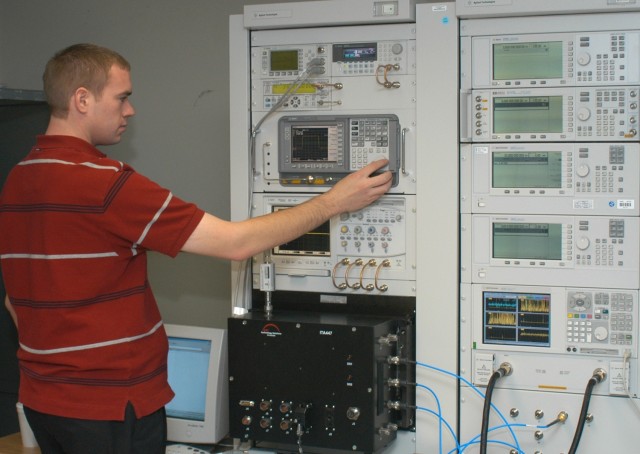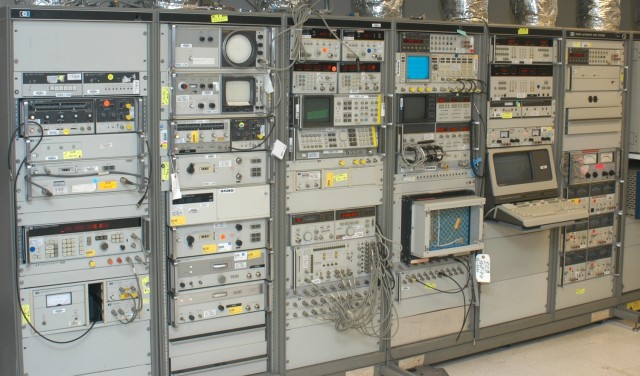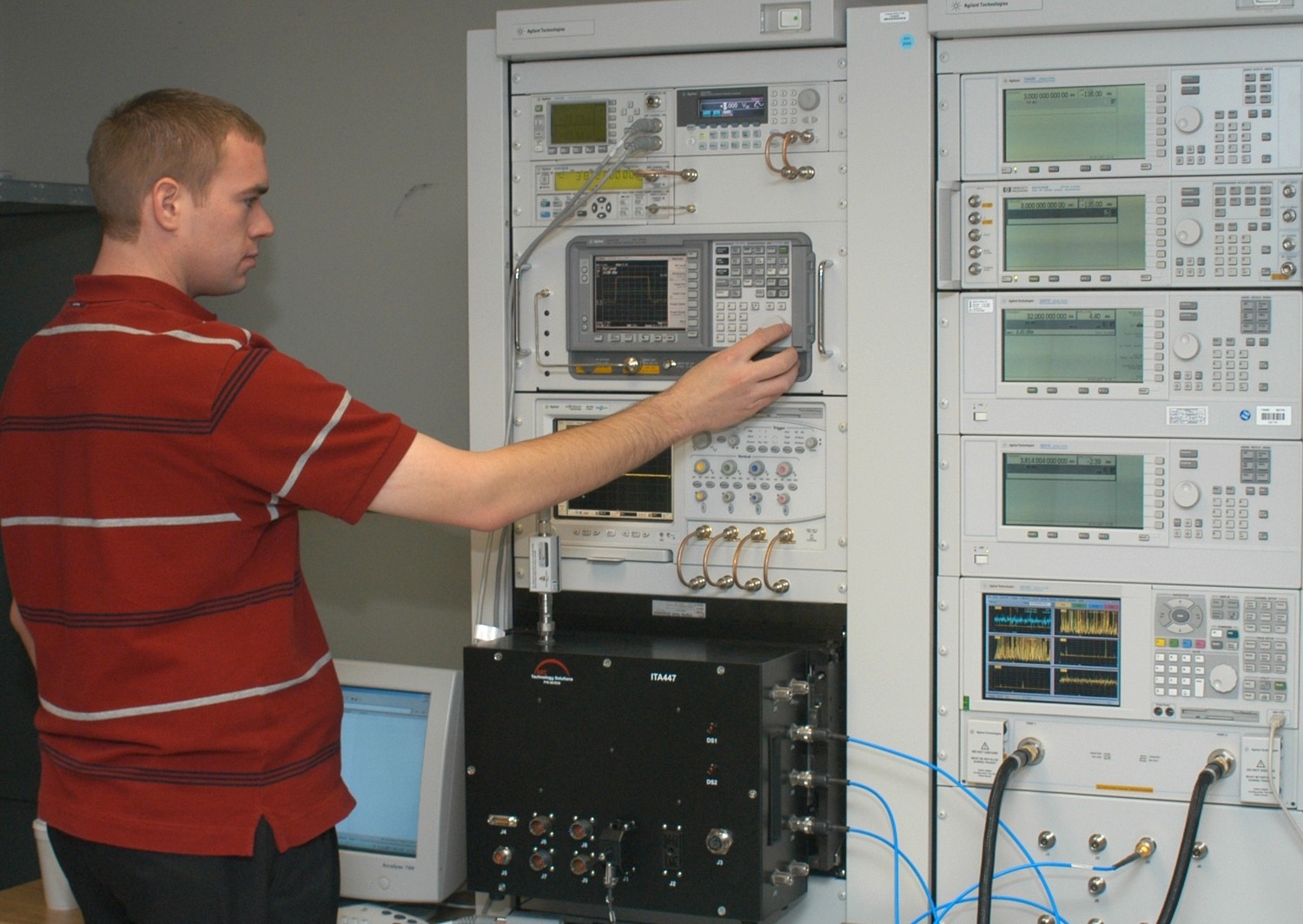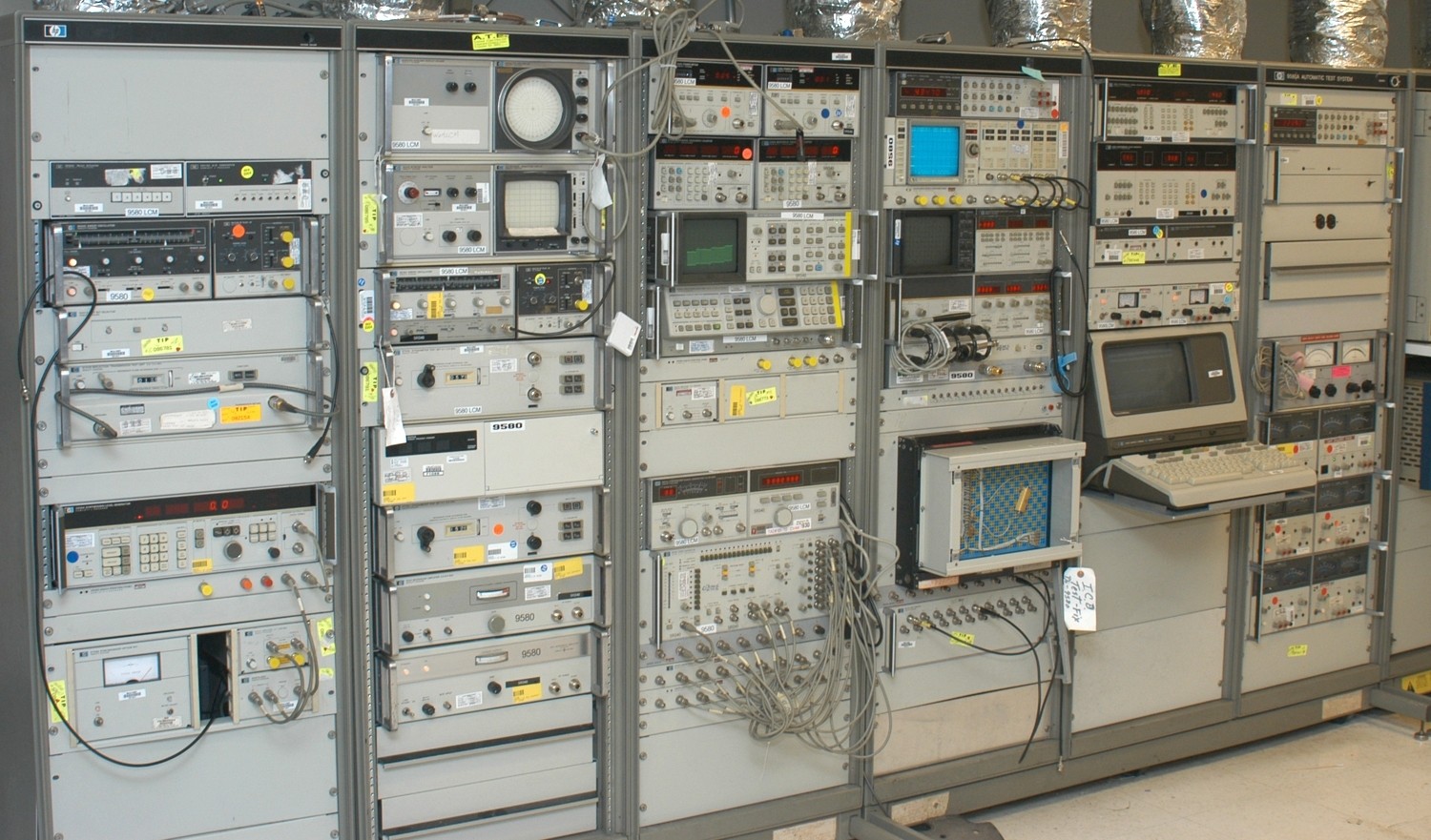Tobyhanna Army Depot has developed a new strategy to combat test equipment obsolescence by employing modern hardware and software technologies.
The benefits of this include lower maintenance costs, reduced downtime, and the increased accuracy and reliability of diagnostic testing, says Ronald Mercatili, electronics engineer, Test Program Development Division. Further benefits include a reduced footprint and faster application development.
Tobyhanna has been a Defense Department leader in the use of automatic test equipment (ATE) as a tool for functionally testing and diagnosing electrical/electronics failures since the 1960s.
For nearly four decades, depot engineers and technicians created and maintained hundreds of Test Program Sets in support of the Defense Department's most critical command, control, communications, computer, intelligence, surveillance and reconnaissance systems (called C4ISR). Some of the main ATE used at Tobyhanna included Army standard test systems such as the AN/USM-410, the AN/GSM-340 and the AN/USM-465 as well as a host of application-specific test systems.
The quantity of ATE at Tobyhanna increased dramatically around 2000 due to workload transitions that resulted from the Base Closure and Realignment process.
"Many of the ATE systems currently at Tobyhanna have been used for decades and become obsolete," Mercatili said. "In many instances, weapon systems have long outlived the systems designed to test and repair them."
ATE obsolescence issues typically lead to high maintenance costs, unacceptable test system down times and adversely impact production schedules.
In the past, Tobyhanna dealt with these obsolescence issues either by dedicating additional engineering resources to maintain ATE, using third party companies for equipment spares and service contracts, or by re-hosting test program sets to other existing in-house systems. Re-hosting is a process of moving a test program set (hardware and software) from one test platform to another.
These approaches often proved to be costly in terms of money, time and resources, and served as a patch rather than a long-term fix to the problem.
Tobyhanna Army Depot has developed a new strategy to combat this problem by employing today's hardware and software technologies in the design and development of test systems that facilitate the rapid re-host of existing test program sets to modern test platforms.
"These newly-designed ATE systems are built using commercial-off-the shelf (COTS) test equipment and are controlled by personal computers running the Microsoft Windows operating system," Mercatili said.
Re-hosted test programs are re-written using innovative software products such as the National Instruments LabView graphical programming language and TestStand test sequence editor and test executive. Depot engineers used this commercial software architecture to create customizations within the TestStand test sequence editor to provide the framework for Test Program Set programming environments that promote rapid test program development.
"These customizations also serve to eliminate the possibility of future equipment obsolescence problems," Mercatili said. "Interface hardware is rapidly produced by third party companies using documentation packages provided by Tobyhanna. With this approach, the depot is better able to fulfill its extensive ATE requirements for functional and diagnostic testing."
For example, the ADADS (Army Depot Automated Diagnostic System), an ATE system, came to Tobyhanna as a result of base closures under the 1995 Base Realignment and Closure process. "The first two years of maintenance on that system cost approximately $300,000," says Mercatili. "The mean time between failures was only days, so we had people dedicated to that system, trying to keep it alive. It got to the point where we couldn't do it any more, so we re-hosted it to a VXI based platform."
VXI is an acronym for VME Extension for Instrumentation. VME, or Versa Modular Eurocard bus, is a 32-bit computer bus architecture developed by a private company. It is widely used in industrial, commercial and military applications.
The transition involved 25 test programs and took less than two years from specification to deployment, at a cost of $150,000. It paid for itself in 12 months.
"It's been deployed on the shop floor for roughly three years now and it's had only one hardware failure which was quickly remedied," says Mercatili.
Tobyhanna Army Depot is the Defense Department's largest center for the repair, overhaul and fabrication of a wide variety of electronics systems and components, from tactical field radios to the ground terminals for the defense satellite communications network. Tobyhanna's missions support all branches of the Armed Forces.
About 4,400 personnel are employed at Tobyhanna, which is located in the Pocono Mountains of northeastern Pennsylvania.
Tobyhanna Army Depot is part of the U.S. Army Communications-Electronics Life Cycle Management Command (C-E LCMC). Headquartered at Fort Monmouth, N.J., C-E LCMC's mission is to research, develop , acquire, field and sustain communications, command, control computer, intelligence, electronic warfare and sensors capabilities for the Armed Forces.




Social Sharing